Abstract
ABSTRACT Because short-term bacterial tests have previously shown that about one-third of substituted anthraquinones tested are capable of causing reverse mutation, and two-year feeding studies of three such dyestuffs in rats have shown an excess of hepatocellular carcinomas, a retrospective cohort mortality study was carried out on a population of 1975 male workers employed in a dyestuffs manufacturing plant in Scotland. The population was identified as having worked for more than six months within the factory during the decade 1 January 1956-31 December 1965, and their mortality experience was followed up to 30 June 1980. Age-standardised mortality rates did not show any excess in total or cancer-related mortality.
Full text
PDF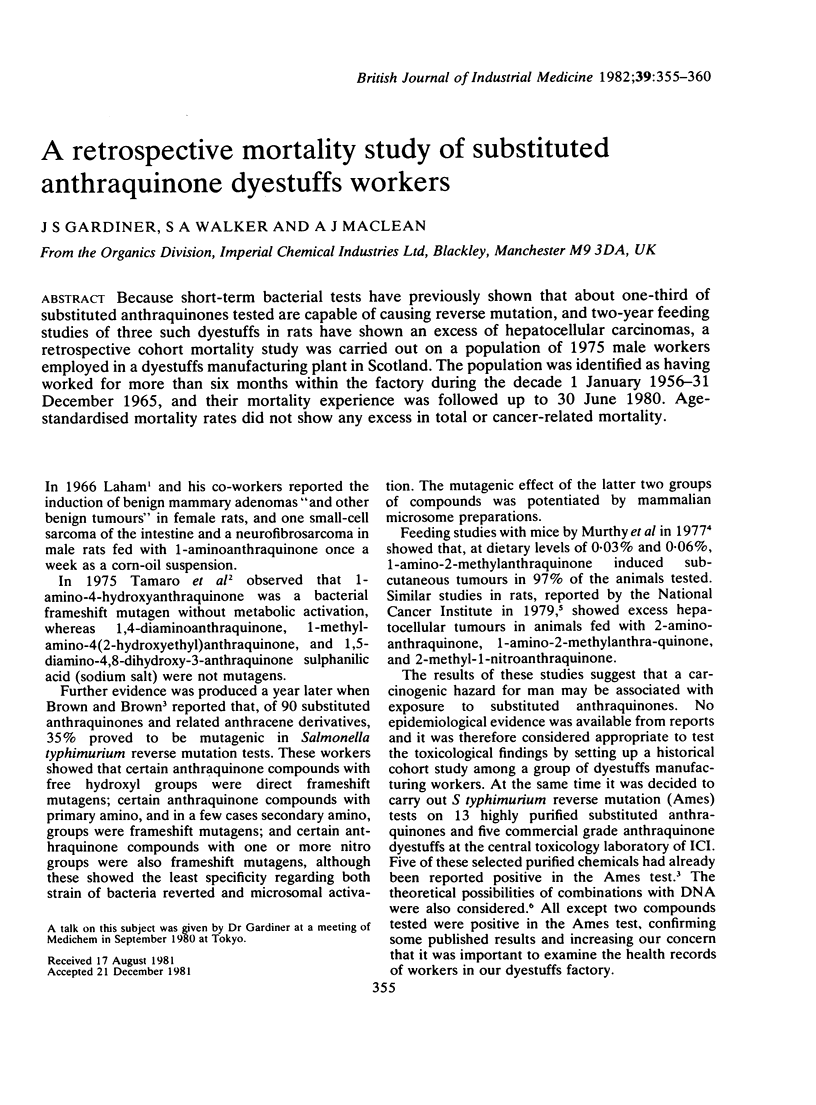
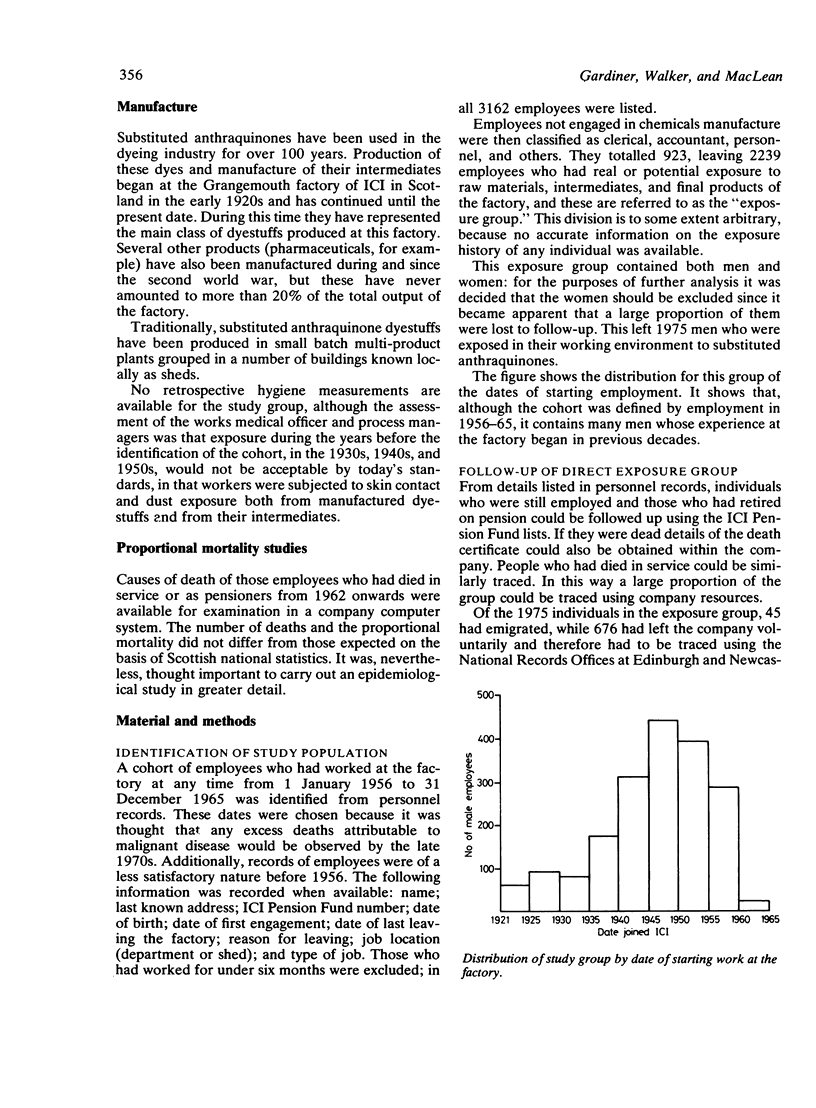
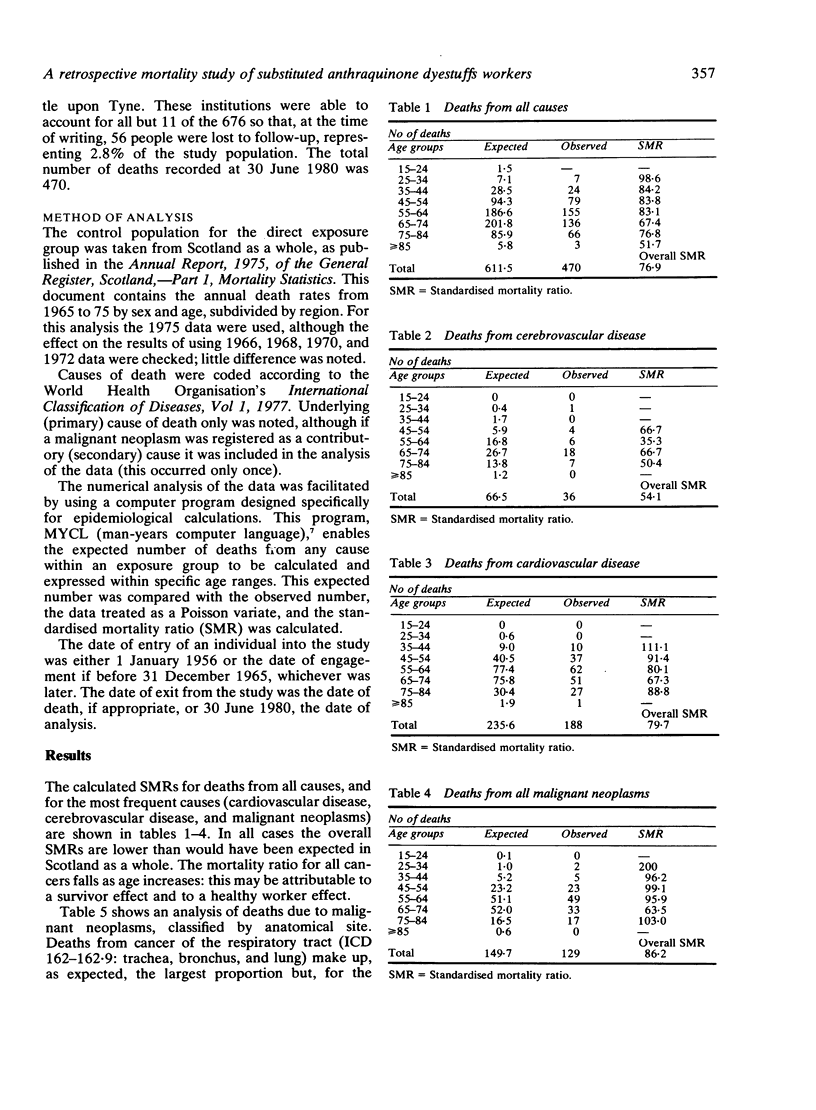
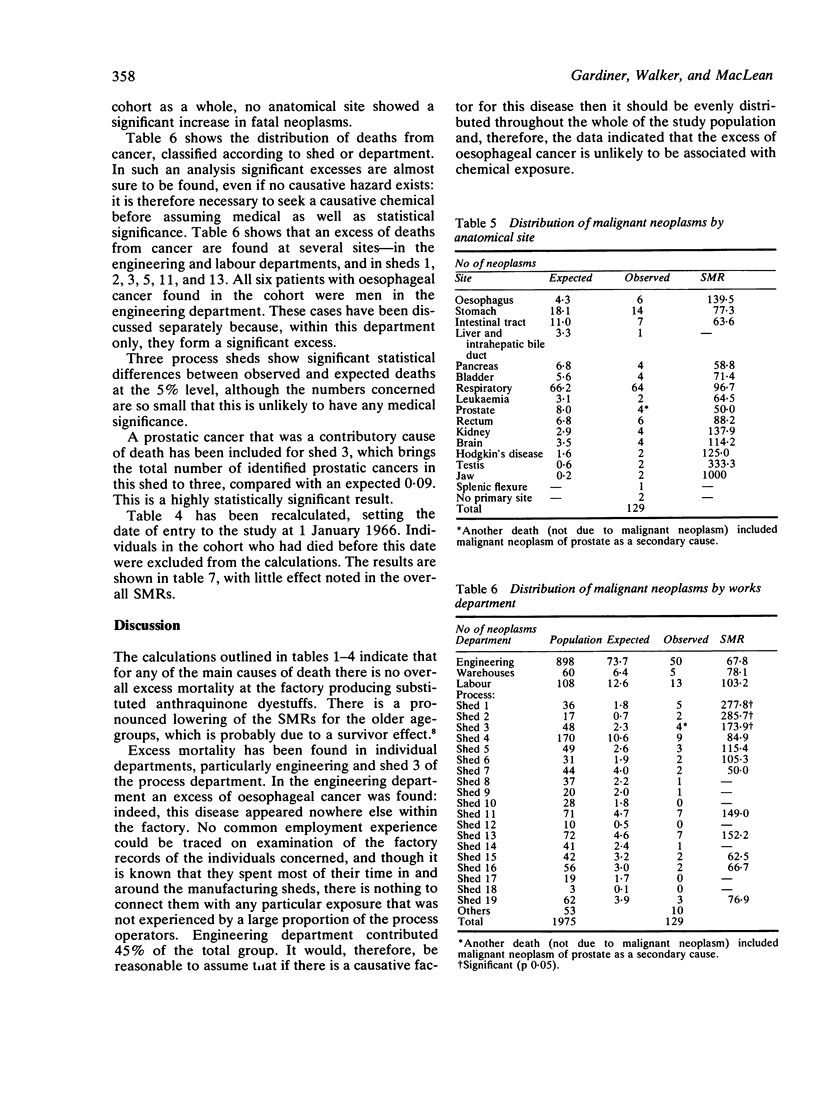
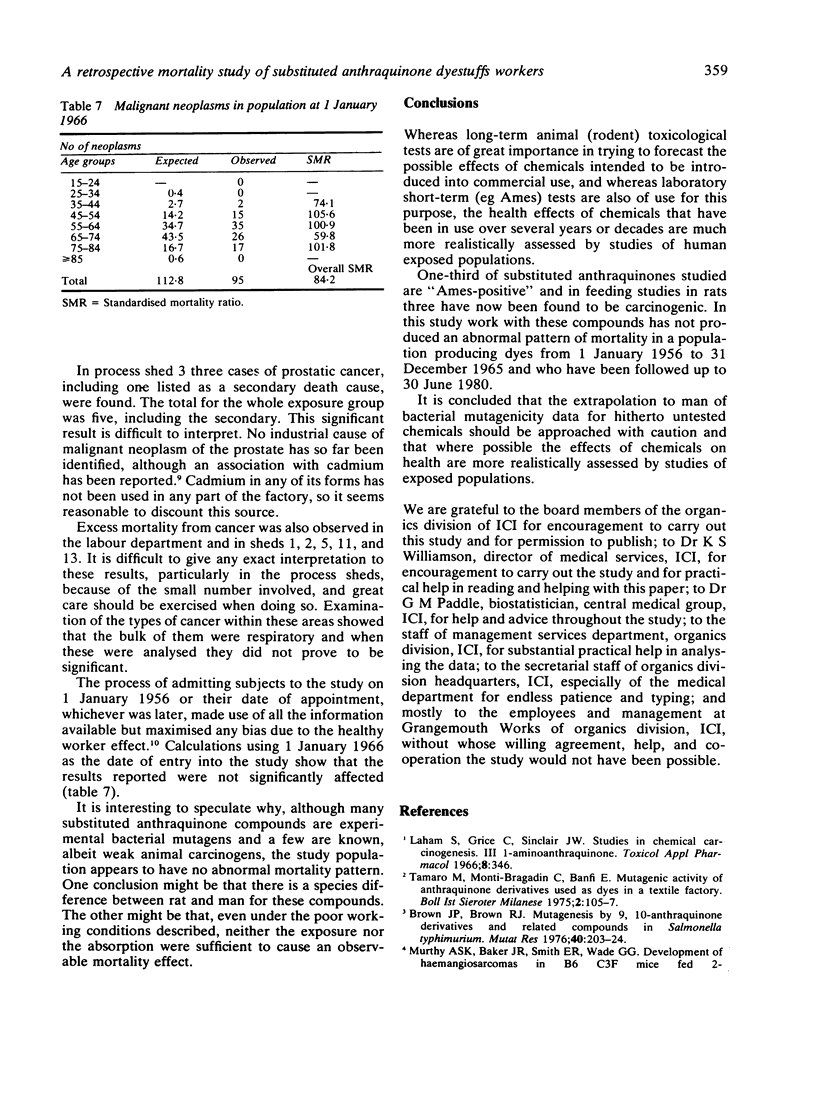
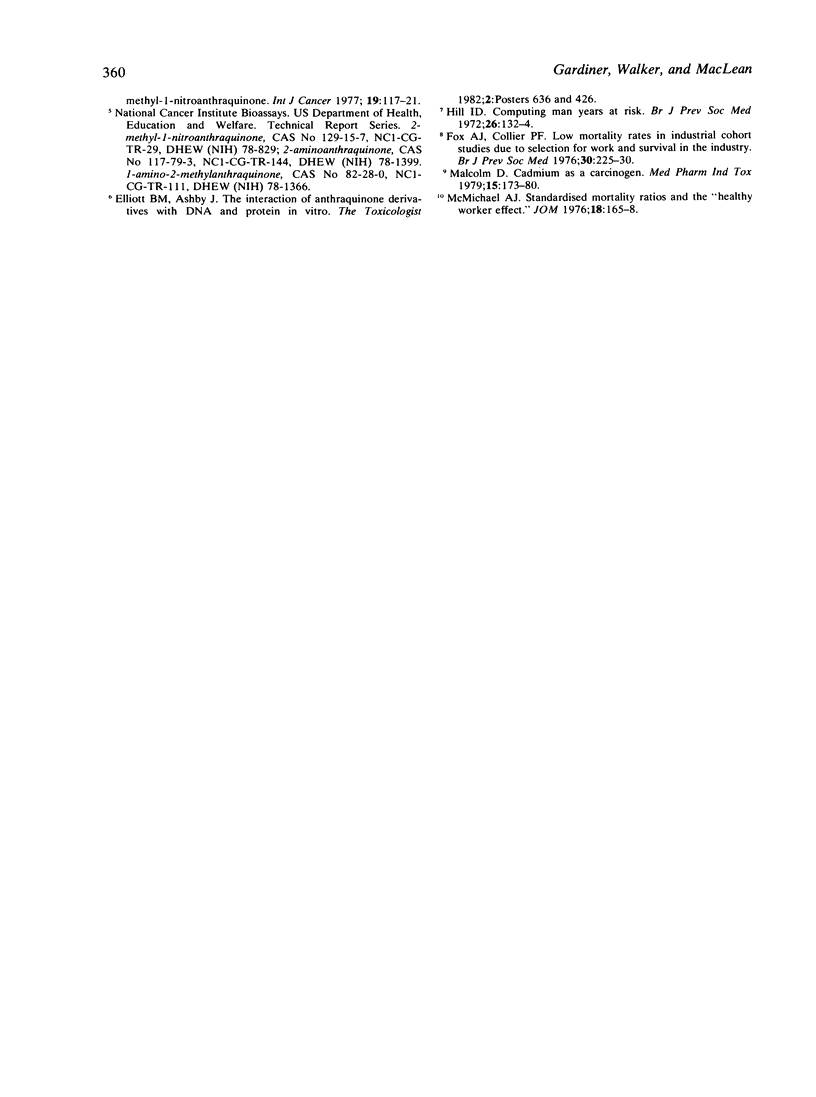
Selected References
These references are in PubMed. This may not be the complete list of references from this article.
- Brown J. P., Brown R. J. Mutagenesis by 9,10-anthraquinone derivatives and related compounds in Salmonella typhimurium. Mutat Res. 1976 Jul;40(3):203–224. doi: 10.1016/0165-1218(76)90046-x. [DOI] [PubMed] [Google Scholar]
- Fox A. J., Collier P. F. Low mortality rates in industrial cohort studies due to selection for work and survival in the industry. Br J Prev Soc Med. 1976 Dec;30(4):225–230. doi: 10.1136/jech.30.4.225. [DOI] [PMC free article] [PubMed] [Google Scholar]
- Hill I. D. Computing man years at risk. Br J Prev Soc Med. 1972 May;26(2):132–134. doi: 10.1136/jech.26.2.132. [DOI] [PMC free article] [PubMed] [Google Scholar]
- Krishna Murthy A. S., Baker J. R., Smith E. R., Wade G. G. Development of hemangiosarcomas in B6C3F1 mice fed 2-methyl-1-nitroanthraquinone. Int J Cancer. 1977 Jan;19(1):117–121. doi: 10.1002/ijc.2910190116. [DOI] [PubMed] [Google Scholar]
- McMichael A. J. Standardized mortality ratios and the "healthy worker effect": Scratching beneath the surface. J Occup Med. 1976 Mar;18(3):165–168. doi: 10.1097/00043764-197603000-00009. [DOI] [PubMed] [Google Scholar]
- Tamaro M., Monti-Bragadin C., Banfi E. Mutagenic activity of anthraquinone derivatives used as dyes in a textile factory. Boll Ist Sieroter Milan. 1975 Jun 26;54(2):105–107. [PubMed] [Google Scholar]


